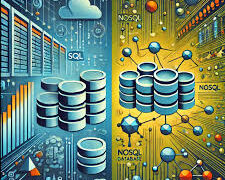Financial literacy is the ability to make informed and effective decisions about managing money. In today’s world, where managing personal finances can be overwhelming, understanding how to budget, save, and plan for the future is more important than ever. Without this knowledge, individuals may find it difficult to navigate financial challenges, leaving them vulnerable to instability.
Social welfare programs are designed to offer important support to individuals and families in times of need, providing resources such as financial aid for basic necessities. When these programs are paired with financial literacy education, their effectiveness increases significantly. By equipping beneficiaries with the skills to manage their resources wisely, these programs not only help them meet immediate needs but also empower them to build a more secure, prosperous future for themselves and their communities.
The Economic Role of Social Welfare Programs
Social welfare programs are Important for helping low-income families meet their basic needs, such as housing, food, and healthcare. Providing this support, families can use their limited income for other necessary expenses, which improves their overall quality of life. When families spend the assistance they receive on goods and services, it boosts consumer spending, which is a key driver of economic growth. This increased spending supports local businesses, helps create jobs, and stimulates economic activity in the community.
Reducing Poverty and Inequality
Social welfare programs play a key role in lifting individuals and families out of poverty, directly addressing economic inequality. These programs provide financial support that helps bridge income gaps, giving people access to resources they might otherwise lack. Over time, reducing poverty not only benefits individuals but also strengthens the economy. When people have financial stability, they are more likely to find jobs, contribute through taxes, and support their communities. This creates a cycle of improvement that fosters equality and builds stronger, more united communities.
Stimulating Local Economies
The funds provided through welfare programs often flow back into local economies, creating a positive impact. Recipients usually spend their assistance on essential needs like groceries, healthcare, and household goods, which supports small businesses and service providers. This increase in consumer spending helps industries like retail, healthcare, and education thrive. In turn, this demand creates more job opportunities and strengthens the local workforce, making the community more economically resilient. This ripple effect benefits everyone by driving growth and stability.
The Role of Technology in Strengthening Social Welfare Systems
Technology has transformed how social welfare services are delivered, making them more convenient and efficient. Digital tools and mobile apps now allow individuals to apply for programs, track their benefits, and access important updates without the need for in-person visits. For example, South Africa’s SASSA system lets users manage details like updating contact information through an online platform, reducing wait times and improving access to support. Globally, these advancements are closing service gaps, particularly in remote areas, ensuring help reaches those who need it most.
Encouraging Financial Inclusion
Integrating technology into welfare systems is also driving financial inclusion for underserved communities. Digital banking and mobile platforms are providing tools for individuals who previously lacked access to traditional banking services. Welfare payments distributed through these systems allow recipients to manage funds, save securely, and make transactions directly. This approach not only simplifies benefit delivery but also encourages participation in the formal economy, fostering financial independence and supporting long-term economic growth.
Challenges and Solutions in Social Welfare
Implementing social welfare programs comes with several hurdles, such as combating fraud, modernizing outdated systems, and addressing funding shortages. In the U.S., issues like overpayments in unemployment benefits and insufficient resources for program updates highlight these challenges. Similarly, administrative inefficiencies in countries like South Africa lead to delays when recipients fail to update important details, such as phone numbers. For example, SASSA phone number changes often go unreported, causing communication gaps and payment interruptions. Addressing these issues requires a unified approach across nations, focusing on transparency and system upgrades.
Technology as a Solution
Advancements in technology offer innovative solutions for these challenges. In the U.S., digital tools like online portals and mobile apps have streamlined processes for benefit applications and updates. South Africa has followed a similar path, with SASSA status check online platforms enabling recipients to track their benefits seamlessly. These systems reduce administrative delays and empower beneficiaries to manage their welfare accounts independently. Moreover, incorporating features like automated notifications and secure verification helps both countries address fraud and miscommunication, fostering smoother operations for welfare systems globally.
Driving Economic Growth Globally
Welfare systems around the world play a key role in supporting individuals while boosting economic growth. In the United States, unemployment benefits have proven effective in maintaining consumer spending during economic downturns, helping to stabilize the economy. South Africa’s SASSA grants enable low-income families to cover basic necessities, creating positive effects for local businesses and communities. Scandinavian countries go even further with universal healthcare and education benefits, reducing economic inequality and fostering higher workforce participation. These examples highlight how robust welfare programs can drive both social and economic progress.
Strengthen Economic Growth
Strengthening welfare systems requires innovative strategies to address today’s challenges. Technology can streamline operations, making support systems faster and more accessible. For instance, platforms that allow updates like South Africa’s SASSA phone number change system reduce administrative delays, ensuring timely payments. Offering financial literacy programs can empower beneficiaries to manage their finances effectively, fostering long-term stability. Simplifying application processes and creating user-friendly digital tools, especially for underserved populations, can expand access to critical services. These practical improvements can enhance the reach and efficiency of welfare programs, creating a stronger foundation for individuals and economies alike.
Financial Stability for Households and Its Impact
Welfare programs serve as a crucial support system for families struggling to meet their basic needs. By providing consistent financial assistance, these programs help households afford essentials like food, housing, and healthcare without falling into debt. Families who receive this support often experience reduced financial stress and a noticeable improvement in their quality of life. This stability enables them to shift their focus from mere survival to achieving long-term goals, fostering a sense of security and hope for the future. Such positive outcomes contribute to healthier communities and stronger economies.
Promoting Financial Literacy
Integrating financial education into social welfare programs equips beneficiaries with the tools to manage their resources effectively. These initiatives focus on teaching essential skills like budgeting, saving, and future planning, enabling recipients to make informed financial decisions. For example, partnerships in programs like SNAP in the U.S. offer workshops and resources to encourage smarter money management. These efforts do more than address immediate needs, they lay the groundwork for long-term financial independence, empowering individuals to achieve greater
Conclusion
Social welfare programs are more than just safety nets—they are investments in society and the economy. They boost household stability, improve workforce participation, and support local economies. Tackling common challenges with technology and better data management can strengthen these systems even further. Programs like SASSA’s show the importance of accurate information and accessible systems, while efforts in other countries highlight the value of education and inclusivity. Moving forward, improving and expanding these programs is not just beneficial for those in need, it is required for creating a stronger, more balanced global economy.



































